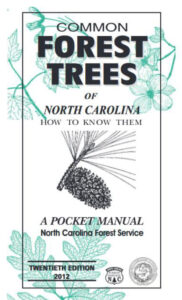
|
Common Forest Trees of North Carolina: How to Know Them
N.C. Department of Agriculture and Consumer Services, N.C. Forest Service
Trees have many characteristics that can be used to identify particular species: overall size and shape; the color, size and shape of leaves; the texture, color and shape of twigs and buds; and the color and texture of bark, fruit and flowers. Growing range is also useful in identifying tree species. Most people use several of these characteristics to identify a specific tree. This publication produced by the N.C. Forest Service looks at the characteristics used to identify North Carolina’s forest trees. The book is currently out of print but is available online through N.C. State University Cooperative Extension here.
|
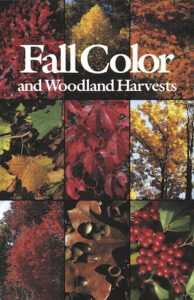 |
Fall Color and Woodland Harvests:
A Guide to the More Colorful Fall Leaves and Fruits of the Eastern Forests
By C. Ritchie Bell, Anne H. Lindsey
This is a wonderful companion for those who appreciate autumn’s vibrant spectacle. Rich with color photographs that capture the hues of the season, this volume offers a species-by-species guide to the leaves of 100 species of the eastern United States and the fruits and seeds (the woodland harvests) of an additional 47 species, paying particular attention to the plants’ locations and contributions to the fall color palate. The authors clearly explain the biological processes that result in leaf-color change and offer helpful tips on when and where to go see the best color. Available from The University of North Carolina Press |
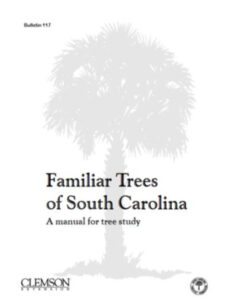 |
Familiar Trees of South Carolina
By George D. Kessler and Roland E. Schoenike
Trees, one of the most conspicuous features of the South Carolina landscape, have played an important role in the history and the economic development of the palmetto state. This tree study manual has been prepared to aid 4-H Club members, teachers, youth group leaders and others who want to identify or to know more about the trees of our state. It is a major revision of a bulletin first issued in 1950. Available through Clemson Extension here.
|
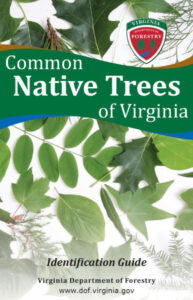 |
Common Native Trees of Virginia Tree Identification Guide
By Virginia Department of Forestry
This book describes the most common native tree species found in Virginia’s forests. Native trees are considered to be those present in Virginia before the time of European settlement. Natives are adapted to Virginia growing conditions, benefit native insects and wildlife, and form a critical part of natural plant communities. This book is intended to be a tool for tree identification, rather than a comprehensive listing or technical manual. Therefore, non-technical descriptions have been used whenever possible. The basic keys provide a quick identification tool, minimizing the time spent searching for an unknown tree. This guide is available online here. |
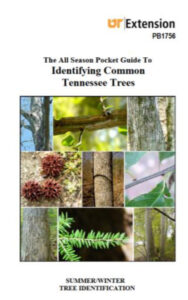 |
The All Season Pocket Guide to Identifying Common Tennessee Trees
By University of Tennessee Extension
This booklet was prepared by professional foresters to help you identify Tennessee’s most common trees. It is designed to go to the woods with you (where it is needed) by comfortably riding in your back pocket, pack or cruiser’s jacket. Enjoy! Available online from the University of Tennessee Knoxville here. |





